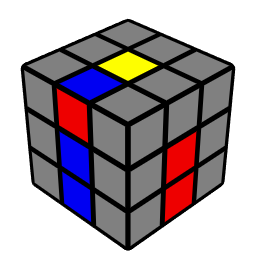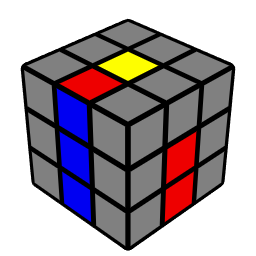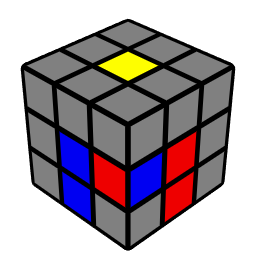Edge Orientation (EO)
Understanding edge orientation to improve lookahead and solve efficiency
About This Guide
Understanding Edge Orientation (EO) can lead to better lookahead and more efficient solves. This guide covers the fundamentals of EO and how to apply it in practice. This is a bit advanced, so not getting all of it right away is okay! You may revisit this guide at any time.
What We'll Cover
- What is Edge Orientation?
- Using EO to improve inspection
- Using EO to improve F2L
- Using EO to influence Last Layer
What is Edge Orientation?
A 3x3 has 12 edges and 8 corners. To solve the cube, all pieces need to be both permuted correctly (in the right spot) and oriented correctly (facing the right direction).
Recognition Methods
For Top/Bottom Layer Edges:
- Has white/yellow sticker
- Check if white/yellow is on top/bottom = oriented
- If on sides = misoriented
For Middle Layer Edges:
- Oriented if white/yellow on front/back
- Misoriented if white/yellow on left/right
How to Orient Edges
- Use F or B moves (prefer F for speed)
- Use algorithms like sledgehammer:
R' F R F' - Rotate with y/y' to change orientation perspective
Note: An oriented edge isn't necessarily oriented from all angles!
Interactive Demonstration
Click on algorithms below to see the moves in action!
Using EO to Improve Inspection
Planning ahead gives you a significant advantage. Start by mastering cross planning, then gradually add edge orientation tracking.
The Process
- Plan your cross solution
- Pick an edge you want to solve next
- Track its orientation through cross
- If oriented after cross → solve directly
- If misoriented → rotate to orient it
Edge States After Cross
- Oriented in top: Solve directly with R/U moves
- Misoriented in top: Use y/y' rotation first
- Misoriented in middle: Use something like
R U R'to take out the edge, then rotate
Using EO to Improve F2L
Since cross is solved first, oriented edges can often be solved without F moves or rotations. This makes F2L pairs much more efficient.
Key Strategies
- Prioritize oriented edges when possible
- Use y/y' rotations to orient misoriented edges
- Solve oriented edges first to maintain flow
Advanced Technique
Multiple Edge Tracking: When you have one oriented and one misoriented edge, solve the oriented one first, then rotate to solve the misoriented one.
Example Sequences

Oriented pair:
R U' R'

Misoriented pair (rotate first):
y U' L' U L

Misoriented edge (take out and rotate):
R U R' y
y R U2 R' y' U R U R'
U R U' R' y R U2 R'
Using EO to Influence Last Layer
With full CFOP, you orient then permute the last layer. If edges are already oriented, algorithms are faster and skips are much more likely.
Influencing Techniques
Use these algorithms strategically during F2L:
- Sledgehammer:
R' F R F' - Hedge:
F R' F' R
Strategic Choice
Instead of the standard insert:
U R U' R'
Standard
Consider using sledge when it orients more edges:
R' F R F'
EO Influence
Practice Tips
Getting Started
- Focus on recognizing oriented vs misoriented edges
- Practice tracking one edge through cross
- Start with slow solves to build awareness
Advanced Practice
- Track multiple edges simultaneously
- Experiment with EO-influencing algorithms
- Notice patterns in your typical F2L solutions
Continue Your Journey
EO awareness develops gradually. Keep practicing and revisit these concepts as your skills improve!